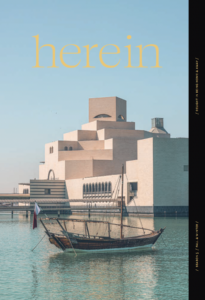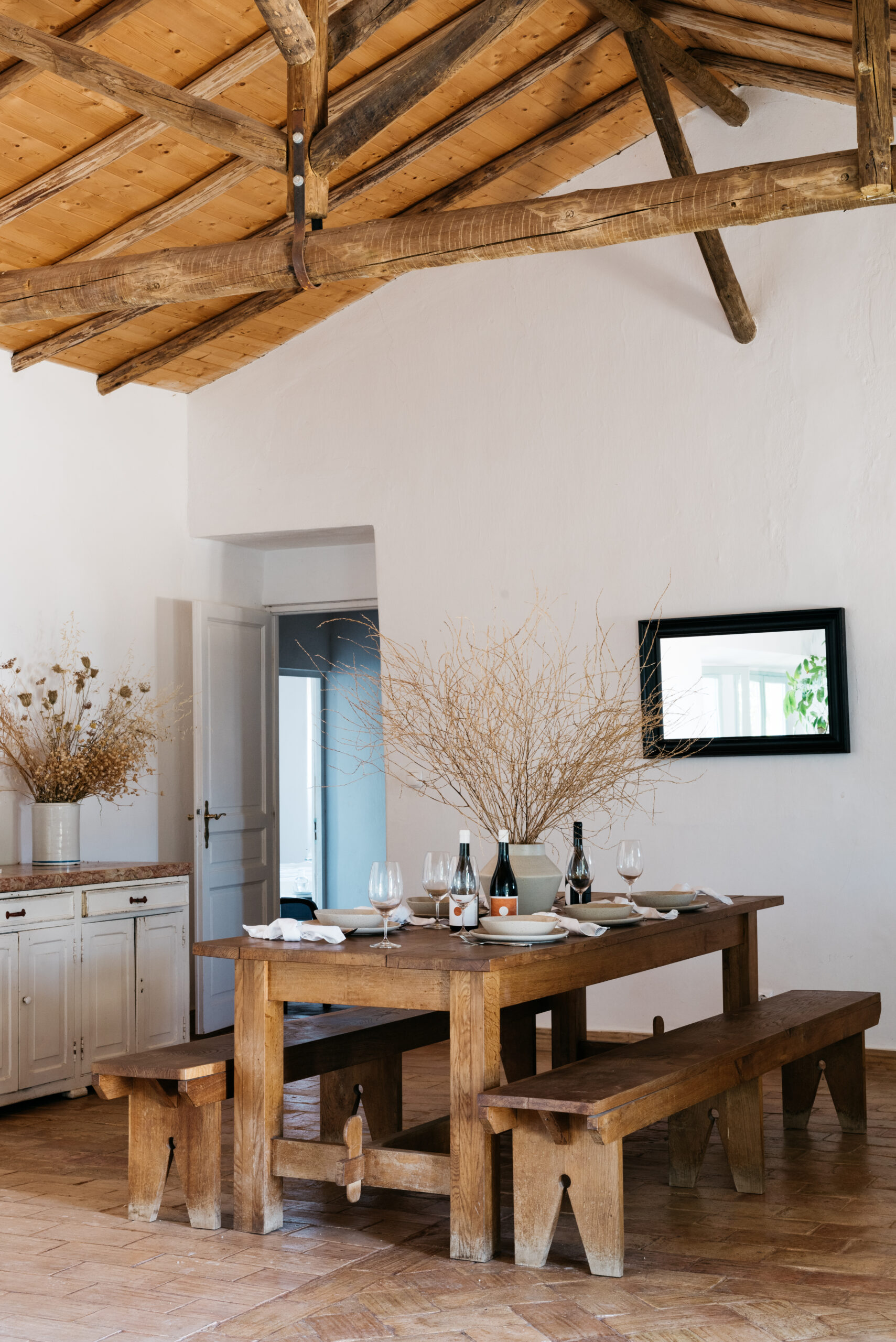Text by Kathryn Drury Wagner
Artistic renderings courtesy of Thor Urbana
Sometimes, not knowing which direction to turn is a good thing. At Siari, a Ritz-Carlton Reserve Residence in the Riviera Nayarit region of Mexico, one simply can’t go wrong, with four ecosystems, including an old-growth jungle, volcanic cliffs, mangrove estuaries, and a pristine beach.
Slated to open in the first quarter of 2025, Siari is tucked within the private community of Nauka, about 45 minutes north of Puerto Vallarta on Mexico’s Pacific Coast side. The 800-acre site will feature 42 private Ritz-Carlton Reserve residences and 90 suites of a Ritz-Carlton Reserve hotel.
Siari reflects a philosophy of sustainable hospitality, explains Jaime Fasja, founder and co-CEO of Mexico-based Thor Urbana, the owners and developers of the project.
“If you are coming to Siari, to this region of Mexico, it’s because you want to understand the culture, the sense of place,” he says. “Siari means ‘green’ in the local Huichol language.” That translated to a low-density approach that blends the buildings into the natural space, as well as a commitment to preserving the natural resources as much as possible.
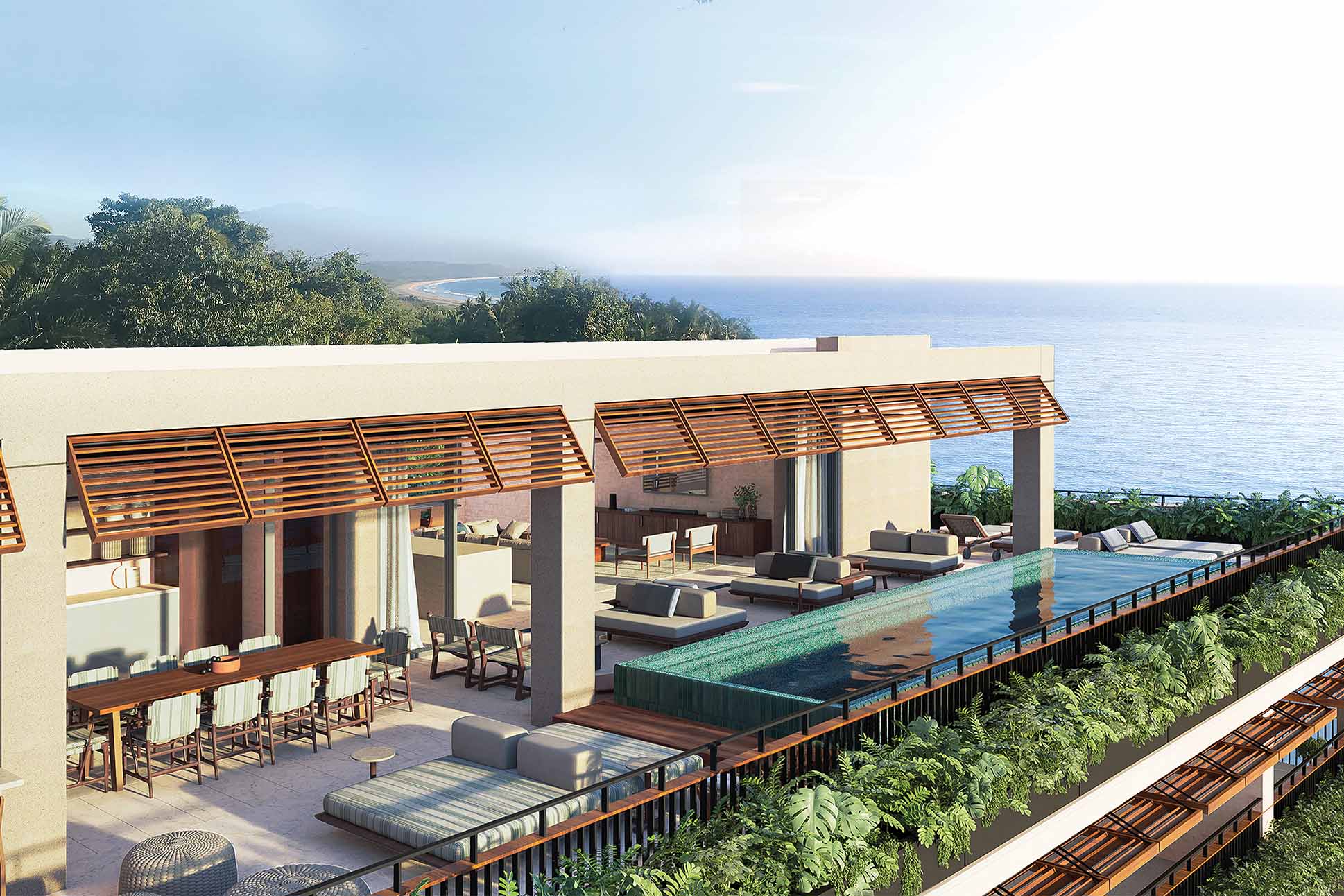

“The Riviera Nayarit is a unique part of Mexico,” says Fasja. “It’s like Hawaii and Costa Rica had a baby. It is one of the most beautiful and swimmable beaches in the country, coupled with amazing jungle and mountains.” The main goal for the architects, Mexico City-based Bernardi + Peschard Arquitectura, he says, was “Don’t mess it up.” The architecture had to be integrated, with the structures seeming like they had always been there.
To protect the site’s 200-year-old trees and endangered species, a team of 20 in-house environmentalists, biologists, and nature experts were hired. Their first matter of business was to identify the key flora and fauna. “The architecture came after that,” says Fasja. “It was, how can we ensure the architecture fits within the landscape? This is a live project. It’s not just building; it’s how do you educate the next generation?”
The eco-team will remain after the property opens, and help guide guests on activities such as tours of the estuary and hikes through the forest or to the volcanic preserve.
“It’s important that they are always on-site, making sure we don’t damage the mangroves or harm the animals that live on the property,” says Fasja. “We think this education aspect is important.” He also notes that the underwater ecosystem includes humpback whales coming through in January through March during their yearly migration from the northern, colder waters of the Pacific Ocean to the southern waters to give birth.
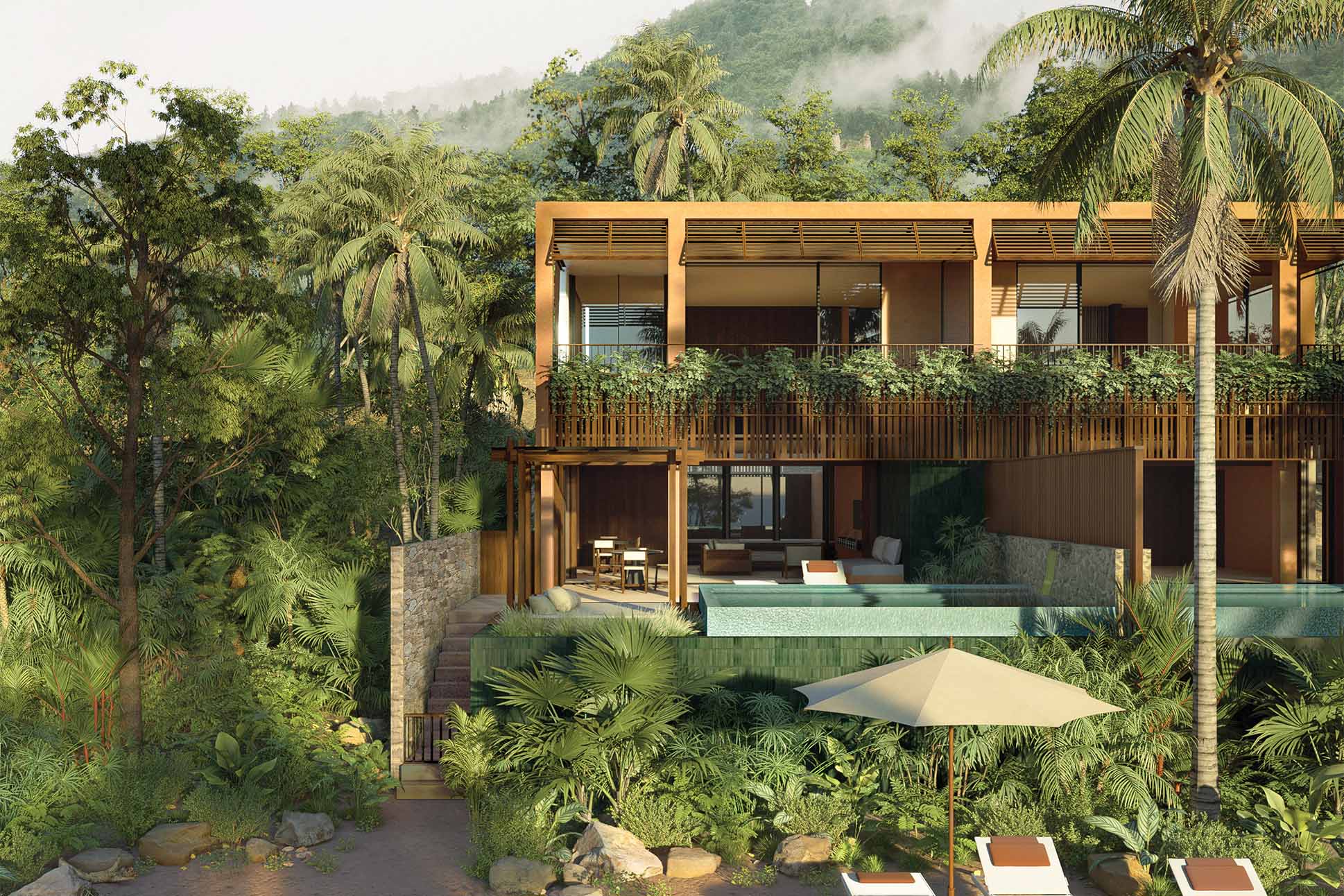
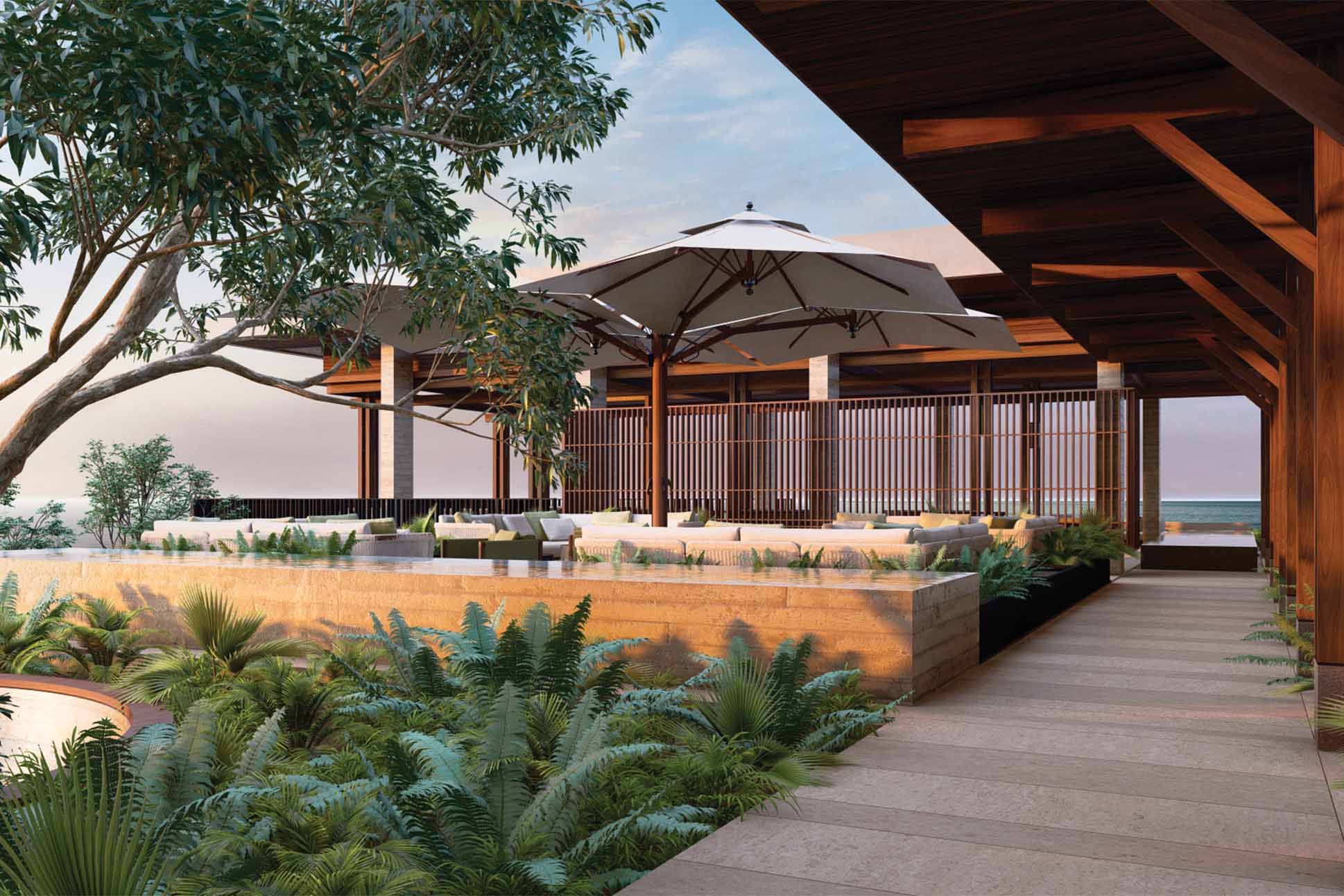
Snorkeling will be a popular activity, notes Fasja, as “You can go out a couple hundred feet and the water is still only up to your waist,” he says.
For the construction of the buildings, Bernardi + Peschard went with a colored concrete in an earthy tone that resembles the color of the earth in the area, to blend the structures in with the mountains. Similarly, the terraces are covered with greenery. Materials were sourced locally as much as possible, says Fasja, such as the stone used for flooring.
“We wanted to evoke a harmonious lifestyle that would mirror the elements of the surrounding ecosystem,” says Fasja. “With open-air views of the amazing sea and ensuring that materials, textiles, and finishings were inspired by the ancient Mexican culture and surrounding community.”
Menus highlight the local Nayarit cuisine; wellness programs tap into traditional healing modalities; and art pieces from local artisans are featured throughout the property. In addition to using solar panels, water capture is another eco-friendly design component. “We are working to capture the water during the rainy season, which takes place from July until the end of September, and save that to use during the dry season, minimizing the amount of fresh water needed for landscaping and outdoor areas.”


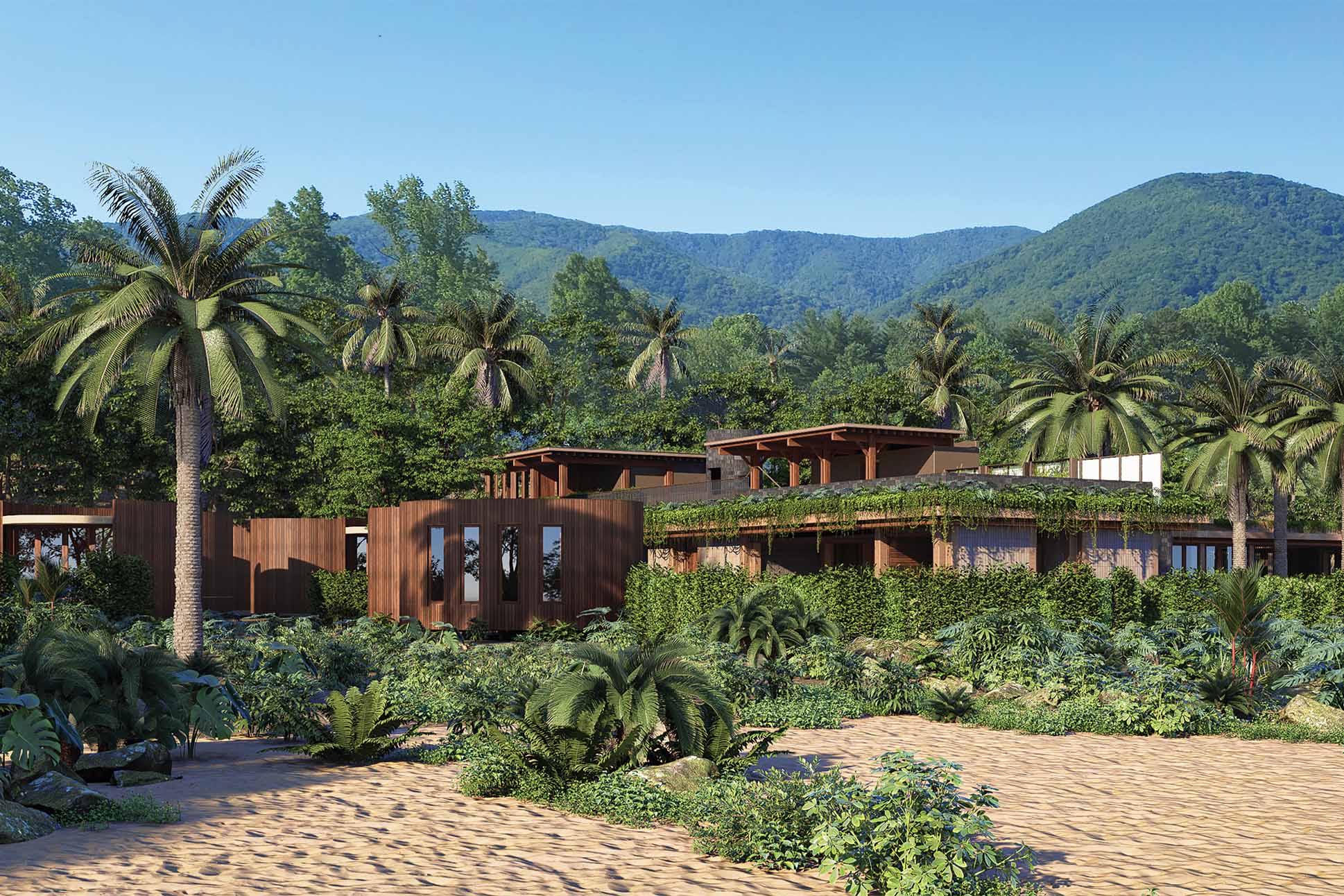
An organic farm at the property will provide fresh produce. Fasja says that the project has also focused on working with the surrounding community, aiming to address transportation and housing needs and improve the standards of living for workers.
The overall effect at Siari is a verdant retreat from the rest of the world, and accordingly, some parts of the resort will purposefully have areas without cell coverage or Wi-Fi service. “So, if you’re at a sunrise yoga class on the beach, you can truly unplug and reconnect with yourself, the people you are with, and your surroundings,” says Fasja.
Siari also has a meditation glass house and a stargazing observatory, where the night sky can be appreciated without the light interference found in many other locales.
Overall, the layout is designed to be walkable. “For me it was important that you can experience it by foot and didn’t have to be transported by golf cart,” says Fasja. “Yes, if you want to, they will pick you and take you anywhere, but we made sure it was an easy walk from the public areas – such as the adult pool, the family pool, the spa, the restaurants—to the private spaces, that it is a pleasant walk, shaded by trees. The history of all those trees is going to be explained throughout the property, too.”
“Our view is that we are only here temporarily,” he muses. “Before us and after us there is great natural surroundings, and we want to make sure we are good stewards of it during the time we are there.”



